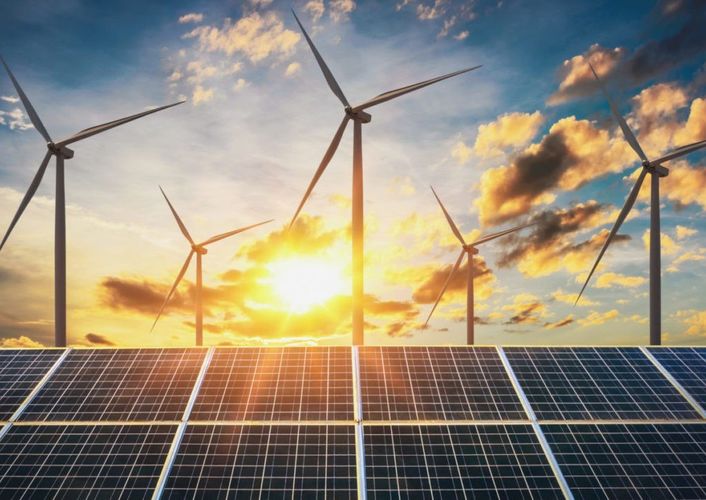Under the chairmanship of Minister of Energy Parviz Shahbazov and with the participation of the heads of the relevant structural units of the ministry, a meeting dedicated to the work to be done and the steps to be taken to calculate the exact potential of renewable energy sources such as hydropower, solar, wind, bioenergy and geothermal energy in Nagorno-Karabakh and surrounding regions was held.
At the meeting, the regions with great potential for renewable energy in the liberated territories were reviewed separately, proposals were made on the installation of measuring observation stations in those regions to determine the exact potential for wind and solar energy, as well as on the evaluation of technical opportunities and economic efficiency.
It was noted that 8 areas with total area of 14427 hectare with high solar energy potential were selected in the territory of Kalbajar, Lachin, Gubadli, Zangilan, Jabrayil, Fuzuli regions. Although it may seem possible to deploy solar power plants with a total capacity of 7214 MW in these areas, the total potential here is estimated at more than 4000 MW, given that some parts of the southern area may have agricultural purposes.
Then, the wind energy resources of the Kelbajar and Lachin regions were reviewed. The potential of wind energy in the mountainous areas of Karabakh is estimated over 500 megawatts and most areas with this potential is located in regions bordering with Armenia. Despite such great potential, due to the lack of favorable infrastructure, it was stressed that the issue of wind power generation in these areas required on-site research operations.
Taking into account the fact that 25% of Azerbaijan's local water resources are generated in Karabakh, electricity generation prospects of major rivers such as Tartar, Bazarchay, Hakari and their branches were reviewed and information was given about the small hydropower plants in the region. It was noted that the existing hydropower stations are located mainly in Tartar, Lachin and Kelbajar regions. Preparations were carried out for the start of repair and restoration work at some small hydropower plants. The information on the bioenergy and geothermal energy sources of the region was also provided at the meeting and the possibility of using these types of energy for the power and heat generation in the future was stressed.
Taking into account the proposals made during the meeting, the tasks were given to prepare the Action Plan covering the work to be done in the field of calculating the exact potential of renewable energy sources, cooperation with relevant bodies in this area, as well as to start activities in the direction of installation of measuring observation stations in areas with high potential.





